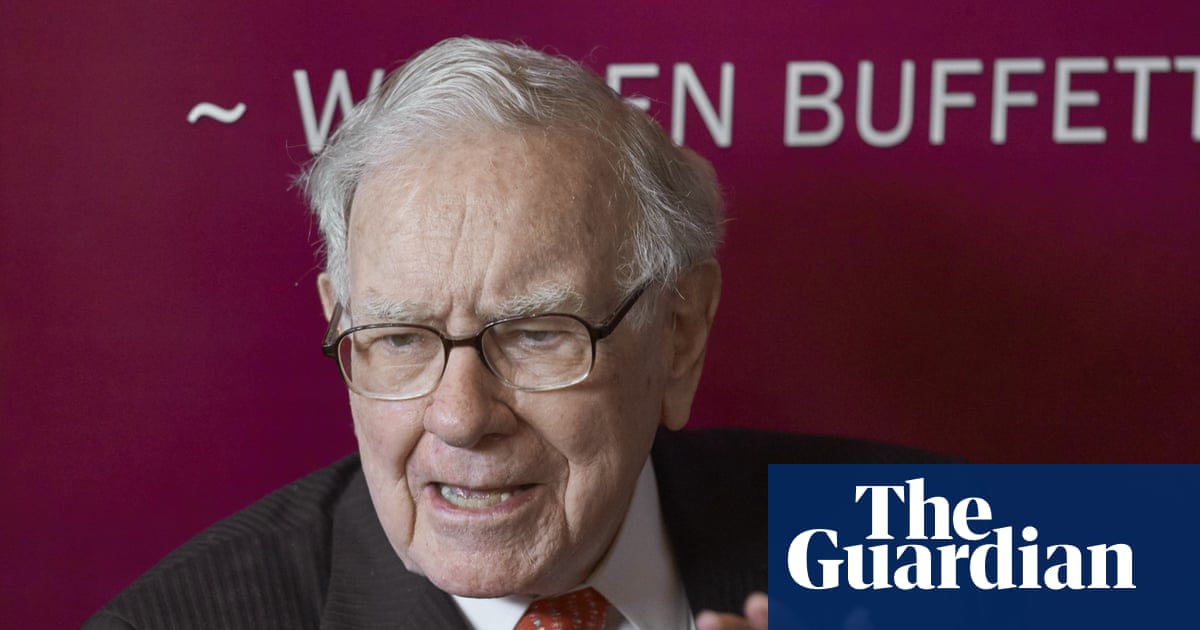In towns where Washington DC is an abstraction, the post office is the front desk of American democracy – sometimes the only public space at all. Here, postmasters are “the human side of government”, as the senator Jennings Randolph put it in 1976. “When such offices are closed,” he warned, “the American flag really comes down.”
Championed by Benjamin Franklin in 1775, the roots of the US postal service – whose mandate is to “bind the nation together” – are older than the republic itself. The constitution calls for “post offices and post roads”. The USPS is still legally obligated to provide a “basic and fundamental” service to all Americans. In Scottsbluff, Nebraska, a rural carrier drives more than 700 miles a year to serve just two households.
But after years in the red – and amid open hostility from the Trump administration – its future looks uncertain.
The USPS has lost about $114bn since 2007, according to financial reports, amid declining letter volume, competition from private carriers and rising employee costs. Meanwhile, the specter of privatization looms larger than ever.
“The postal service is a joke,” Donald Trump told reporters in 2020. A reform plan during his previous administration called for restructuring it “to return it to a sustainable business model or prepare it for future conversion from a Government agency into a privately-held corporation”.
Given this historical scorn, it was no surprise when reports broke in February that Trump was considering dissolving the agency’s leadership and absorbing it into the Department of Commerce.
“The fate of the USPS is no longer financial or managerial, but political,” James O’Rourke, a professor of management at the University of Notre Dame, recently told me. “Putting the post office up for an IPO would not be much of a stretch in the current climate. The checks and balances are gone.”
Indeed, a Wells Fargo memo to investors titled “USPS Privatization: A Framework” was leaked last month. It reads: “Parcel could be carved out and sold or IPOed.” The plan predicts parcel prices would increase 30%–140% across product lines and proposes a post office sell-off so that “value can be harvested” from the real estate.
Yet if the parcel segment were “carved out”, not all of the carcass would bear meat. Investors will seize only the parts they can further monetize, O’Rourke says. That would mean closing small-town post offices and ending home delivery on unprofitable routes.
Think of the mule train that descends into Havasupai territory in the Grand Canyon; the small aircraft and seasonal boats that serve Little Diomede, Alaska, where residents can see Russia from their windows; or Point Roberts, Washington, where mail crosses Canada to reach a US town. If universal service falters, those addresses are likely to be abandoned first.
People in affected zip codes – already more likely to be lower income – will have to travel to pick up parcels or pay steep delivery costs. “Those people will do with less or do without,” O’Rourke says.
But the cost of losing universal service would be more than financial. Vote-by-mail and absentee ballots are particularly critical in rural areas with distant polling stations, and the USPS ensures those ballots reach voters. It also handles 1.2bn prescription-drug shipments each year, as of 2020, according to the National Association of Letter Carriers union. In places with no nearby banks, the post office may be the only location where residents can pay bills.
Rural postal workers also fulfill a civic role that transcends transporting mail. A study of village postmasters from the 1970s illustrates how closely woven they can become into civic life: “People going out of town commonly leave their house keys with the postmaster … residents leave notes with the postmaster for friends to retrieve later in the day.”
While the advent of the internet renders that depiction somewhat antiquated, its essence remains true. “Rural carriers are still the fabric that knits some communities together,” Don Maston, president of the National Rural Letter Carriers’ Association, told me. In some towns, carriers may be the only contact residents have with the outside world – and thus a lifeline, he added. Carriers still carry out “wellness checks” if a resident fails to collect their mail.
Mark Jamison spent 15 years as a postmaster in a remote office in the mountains of North Carolina, where he was the town’s only government worker. Many residents were not literate, so he assisted with written tasks. Older residents would stop by the post office on their way home so he could open their jars. He assembled bicycles at Christmas. Locals referred to him as the “bartender”, because people came in with stories to tell and advice to seek.
“There are still postal employees who do that,” Jamison said.
While the USPS has staved off a formal sell-off so far under the current administration, its universal service is already being eroded in de facto terms. This year, its 10-year “Delivering for America” modernization plan kicks off in a bid to save at least $36 billion. The plan will slow service for about three-quarters of the country’s zip codes, according to the advocacy group Save the Post Office, with rural areas bearing the brunt. The Postal Regulatory Commission voiced opposition to the plan in January, noting it was “very concerned” about how it would disadvantage rural communities.
Louis DeJoy, the former US postmaster general, announced a plan in March to cut 10,000 USPS jobs. Amid reports Trump urged the USPS board of governors to appoint FedEx board member David P Steiner as postmaster general, Brian Renfroe, president of the National Association of Letter Carriers, alleged a “hostile takeover” of the postal service. (Steiner, who took the job in July, has said he does not believe the USPS should be privatized and that he believes “in the current structure of the postal service as a self-financing, independent entity of the executive branch”.)
At the same time, Amazon Logistics is on track to surpass the USPS as the nation’s largest parcel carrier by volume. The company is also speeding up in rural America, as AI-driven efficiencies make more routes economically viable. In April, it announced a $4bn investment to expand its rural “last-mile” network – tripling its size by the end of next year and reaching 13,000 more rural zip codes.
This will be welcome news to those households. But Amazon drivers can’t go the extra mile. They lack the civic responsibilities of government workers, and their routes fluctuate algorithmically, meaning it’s harder to build community ties.
What’s more, Amazon’s last-mile network will expand only as long as it’s profitable to do so. “I don’t see it going into the mule train business, right?” said Christopher W Shaw, author of First Class: The US Postal Service, Democracy, and the Corporate Threat. An Amazon driver will never sing the USPS’s unofficial motto: “Every piece, every address, every day.” Without a legal mandate, why would they?
As one Minnesota town-hall clerk put it in the 1970s: “The post office is like drinking water. You don’t appreciate it till you don’t have it.”
-
Niamh Rowe is a New York-based writer and podcast producer

 3 months ago
62
3 months ago
62

















































